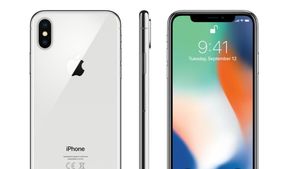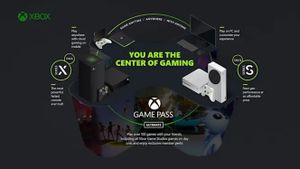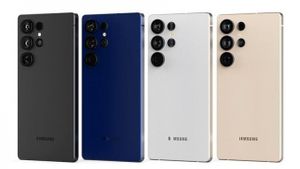JAKARTA – Future foldable phones could move from the current single-fold design to two-fold. This technology is realized using a screen that can fold in and out, or even using a scrolling screen to expand outward.
This is if manufacturers embrace the new foldable display technology that Samsung Display and LG Display demonstrated this week in San Jose, California, during the annual Display Week conference.
LG Display is showing off a foldable 8-inch touchscreen that it says can be folded in and out. This is similar to what was seen from TCL's Ultra Flex concept earlier this year. The design allows the single foldable display to function as both an inner display (like the Galaxy Z Fold 3) and an outer display (like Huawei's Mate XS). Devices equipped with this "360-degree Foldable OLED" can avoid the need to have an inner and outer display that supports only one large display.
LG Display's 360-degree Foldable OLED appears to be able to withstand being folded "more than 200,000 times" before starting to break. This LG Display is said to use a "special folding structure" that minimizes wrinkles. Gizmodo reports that the display has a resolution of 2,480 x 2,200 pixels, the same as the inside screen on Huawei's Mate X2.
Not to be outdone, Samsung Display also showcased some interesting folding technology. Its Flex G and Flex S displays, which were first shown at CES, both offer screens that fold twice. In the case of the Flex G, they fold twice in the same direction as a trifold wallet, while the Flex S folds once inward and once outward like a paper map.
Samsung Display also has a pair of sliding handsets with screens that can be stretched horizontally or vertically. Many concept phones have played around over the years from companies including TCL, Oppo, and even LG before exiting the smartphone business entirely. But despite his interest, no smartphone with a rollable screen has been successfully marketed to date.
VOIR éGALEMENT:
These are just some of the new form factors that LG Display and Samsung Display showcased at this week's event. The two companies are also investing heavily in OLED displays for car infotainment screens, as well as screens designed for gaming, such as the Samsung Display OLED laptop screen with a 240Hz refresh rate, or folding screens designed to have a game controller attached at both ends.
LG Display also has a foldable 17-inch OLED laptop, where the entire inner surface of the clamshell design is one large folding screen.
As the display divisions of their respective South Korean tech giants, neither LG Display nor Samsung Display actually manufacture the consumer devices where their panels end up. But because they supply screens to some of the world's biggest consumer tech companies, fairs like Display Week can provide an interesting glimpse of where foldables are headed in the years to come.
The English, Chinese, Japanese, Arabic, and French versions are automatically generated by the AI. So there may still be inaccuracies in translating, please always see Indonesian as our main language. (system supported by DigitalSiber.id)















